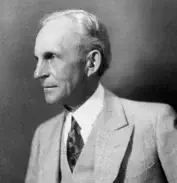
Overview
Many of the hospitals we visit see improving patient satisfaction and experiences, driving HCAHPS scores, and patient care rounding as the sole responsibility of nurses; "After all, nurses provide the care.”
While nursing staff are closely connected to the patient and are clearly a key factor in satisfaction results, there is no need to make nurses solely responsible for improving HCAHPS scores.
There are compelling reasons for all members of management to meet with patients and establish their satisfaction with delivery of care. Combine this approach with a determination check on the satisfaction of every patient, every day and you have the beginnings of a strategy that can improve patient experiences..
How to Involve Non-Nursing Managers
Assign every manager patient care rounds!
Let's cover the typical objections to Non-Nursing Patient Care Rounds:
1. Lack of Clinical Experience:
You can edit text on your website by double clicking on a text box on your website. Alternatively, when you select a text box a settings menu will appear. your website by double clicking on a text box on your website. Alternatively, when you select a text box
When we discuss this topic, the first response is typically,Hospital leader doing patient care rounds "You don’t mean managers with no clinical experience, right?”
Checking on patient satisfaction of “every patient, every day” is not about delivering care or even understanding nursing care delivery.

It’s about ensuring that patient needs are checked thoroughly every day as the basis for ensuring the best possible experience for patients, families, and friends.
2. Too Busy:
The second response is typically, “Our managers are all very busy.”
3. Too Much of a Workload:
4. Lack of Technology:
The fourth response is typically, “We have no way to coordinate the visits, record the results and manage the required follow up.”
If a hospital is going Hospital leadership talking to doctors in the hallways of a hospitalto effectively deploy this approach, the process and supporting technology must be seamless.
One hundred percent completion of meeting assigned patients is non-negotiable.

5. Capability:

Success depends on whether hospital leadership wants to build a sustainable process to maintain and improve patient experience scores.

- Well-trained managers meeting with every patient every day.
- Managers trained to be empathetic with patients and uncover real service issues and concerns.
- Issues uncovered get resolved immediately.

- Issues that cannot be resolved immediately are seamlessly supported by technology that immediately dispatches the appropriate resources to correct a service failure.
- Real time data identifying issues that need performance improvement focus.
- HCAHPS showing a consistent upward trend.
- As managers change, new managers accept the process as part of “how we do things around here."

Summary of Key Steps for Leadership Rounding:
Make the improvement of HCAHPS and patient satisfaction scores a major organizational priority.
Get senior leadership to “buy in” and participate in the patient care rounds.
Adopt the approach of visiting “every patient, every day.”
Obtain real-time supporting technology.
Mentor and train all managers in the process.
Be persistent.
“Success has a price tag on it, and the tag reads courage, determination, discipline, risk taking, perseverance, and consistency – doing the right things for the right reasons and not just when we feel like it.”
— James M. Meston —
Learn more tools to that improve Patient Satisfaction in the free eBook:

